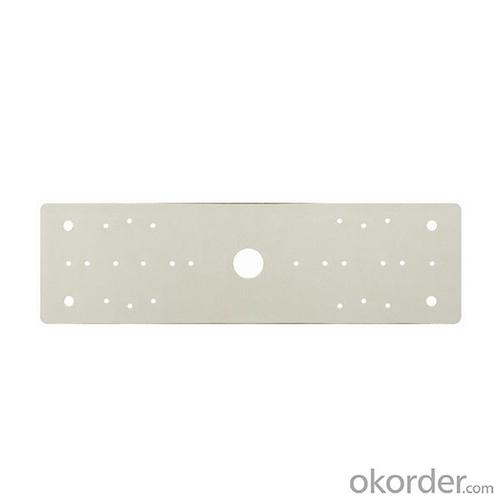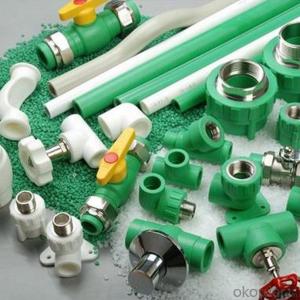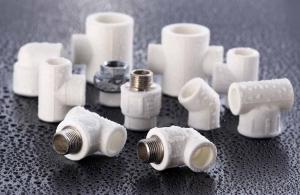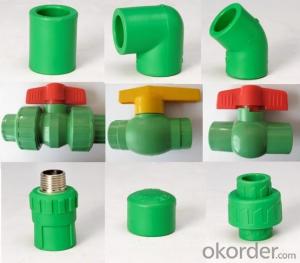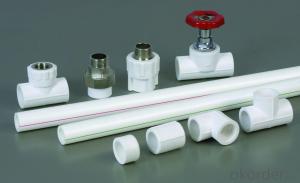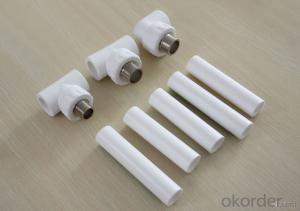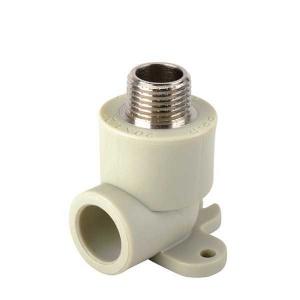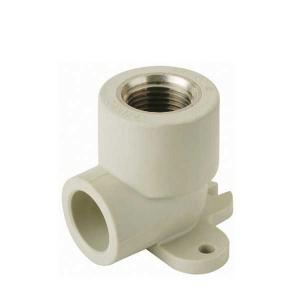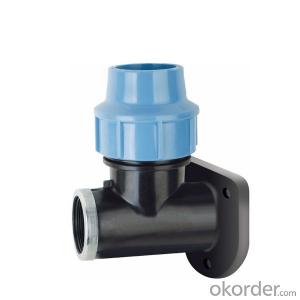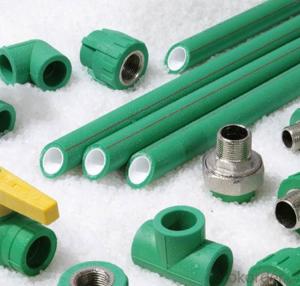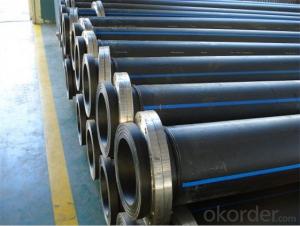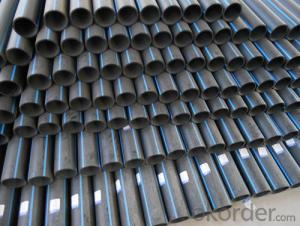Plastic Pipe Tee Fittings for 90 Degree Elbow Wall Mounting Assembling Plate
- Loading Port:
- Ningbo
- Payment Terms:
- TT OR LC
- Min Order Qty:
- 1000 pc
- Supply Capability:
- 100000 pc/month
OKorder Service Pledge
OKorder Financial Service
You Might Also Like
Specification
Picture:


Specifications:
HYOSUNG PPR raw materials
Standard DIN8077-8078
GB/T18742.3-2002 PN25
White grey green color
Product Applications:
Distribution for cool and hot water
Duct for drinkable water system
Pipes for kinds of high-temperature and low-temperature heating system
Pipes for heating and coolling settings in solar energy system
Connecting pipe for air conditioners
Main Product Features:
Healthy, bacteriological neutral, conforming to drinking water standards
Resistant to high temperatures, good impact strength
Convenient and reliable installation, low construction expenses
Large drum hub to maximize cable life
Self-activating automatic brake hold the load securely when crank handle is released
With cable or strap
Safety guard cover available
Top quality with competitive price
Widely used in the double beam bridge crane and gantry crane
Easy to install and high quality
FAQ:
Q1:How Can I Get A Sample?
A1:You can get samples by communicate with our export sales.
Q2:How Long Is Delivery?
A2:Delivery time will be30-45days according to order quantity.
Q3:What Is The MOQ?
A3:MOQ depends on different items.
Q4:What Is Our Normal Payments Terms?
A4:Our normal payment terms now is: T/T, L/C or western union,paypal
- Q: Can plastic pipe fittings be used for mining operations?
- Yes, plastic pipe fittings can be used for mining operations. They are often preferred due to their corrosion resistance, light weight, and durability. Plastic pipe fittings are commonly used for conveying water, chemicals, and other fluids in mining applications.
- Q: Can plastic pipe fittings be used for rainwater collection systems?
- Yes, plastic pipe fittings can be used for rainwater collection systems. Plastic fittings are commonly used in these systems due to their durability, corrosion resistance, and affordability. Additionally, plastic fittings are easy to install and maintain, making them a popular choice for rainwater collection systems.
- Q: TTP-PESI hole net steel belt composite pipe fittings need to be taken?
- The wire mesh and steel band composite plastic pipe is one of the achievements in the Ministry of construction's scientific and technological achievements. As a transportation pipeline, it can be widely used in petroleum, chemical, pharmaceutical, mining, municipal engineering and so on.
- Q: Are plastic pipe fittings resistant to UV radiation?
- Yes, plastic pipe fittings are generally resistant to UV radiation. Most plastic materials used in pipe fittings, such as PVC (polyvinyl chloride) or CPVC (chlorinated polyvinyl chloride), contain additives that provide UV resistance. These additives help protect the fittings from the harmful effects of prolonged exposure to sunlight and prevent them from becoming brittle or degrading over time.
- Q: Can plastic pipe fittings be used for chemical processing systems?
- Yes, plastic pipe fittings can be used for chemical processing systems. Plastic pipe fittings made from materials such as PVC, CPVC, or PTFE offer excellent resistance to various chemicals and can withstand the corrosive nature of many chemicals used in industrial processes. However, it is important to ensure that the specific plastic material and fitting design are compatible with the chemicals being processed to ensure optimal performance and safety.
- Q: Can plastic pipe fittings be used for air conditioning systems?
- Yes, plastic pipe fittings can be used for air conditioning systems. Plastic fittings such as PVC or CPVC are commonly used in air conditioning systems for their durability, corrosion resistance, and ease of installation. However, it is important to ensure that the specific type of plastic and fittings used are compatible with the system's pressure and temperature requirements.
- Q: Can plastic pipe fittings be used for vacuum drainage systems?
- Yes, plastic pipe fittings can be used for vacuum drainage systems. Plastic fittings are commonly used in vacuum drainage systems due to their lightweight, corrosion-resistant, and durable nature. They offer excellent performance and long-term reliability, making them a suitable choice for such applications.
- Q: Are plastic pipe fittings suitable for chemical injection systems?
- Yes, plastic pipe fittings can be suitable for chemical injection systems. Plastic fittings are often used in chemical injection systems due to their corrosion resistance, cost-effectiveness, and versatility. However, the specific type of plastic and the chemicals being used must be taken into consideration to ensure compatibility and appropriate material selection.
- Q: How to set the quota for plastic pipe fittings?
- If the valve without quota, quota to perform a similar process can be performed in the similar process quota of plastic pipe section is appropriate, according to the material included in the flange.
- Q: Do plastic pipe fittings have a maximum operating velocity?
- Yes, plastic pipe fittings do have a maximum operating velocity. The maximum operating velocity is determined by the specific type of plastic material used and the pressure rating of the fittings. It is important to follow the manufacturer's guidelines and recommendations to ensure the safe and efficient operation of the plastic pipe fittings.
Send your message to us
Plastic Pipe Tee Fittings for 90 Degree Elbow Wall Mounting Assembling Plate
- Loading Port:
- Ningbo
- Payment Terms:
- TT OR LC
- Min Order Qty:
- 1000 pc
- Supply Capability:
- 100000 pc/month
OKorder Service Pledge
OKorder Financial Service
Similar products
Hot products
Hot Searches
Related keywords




